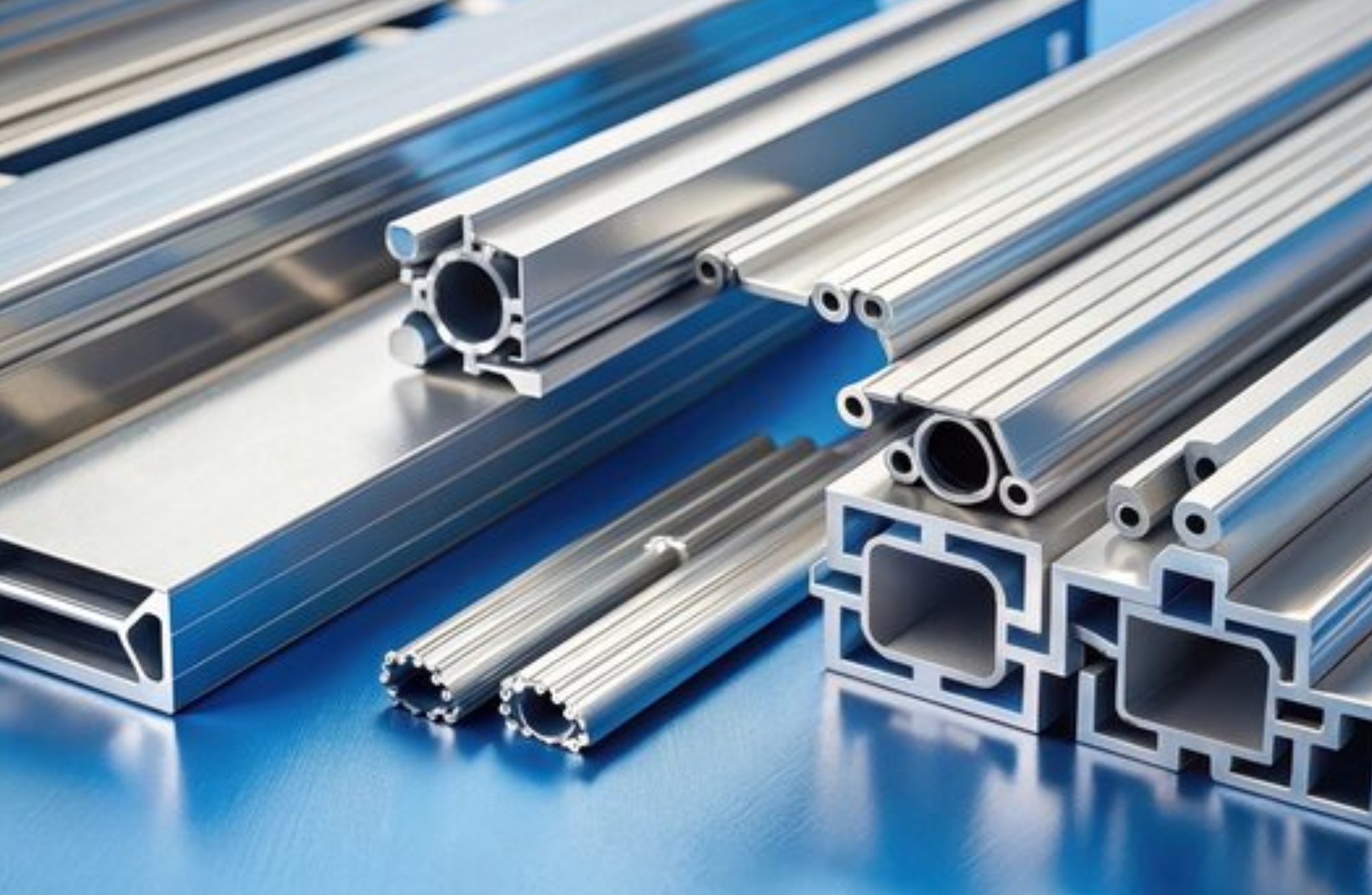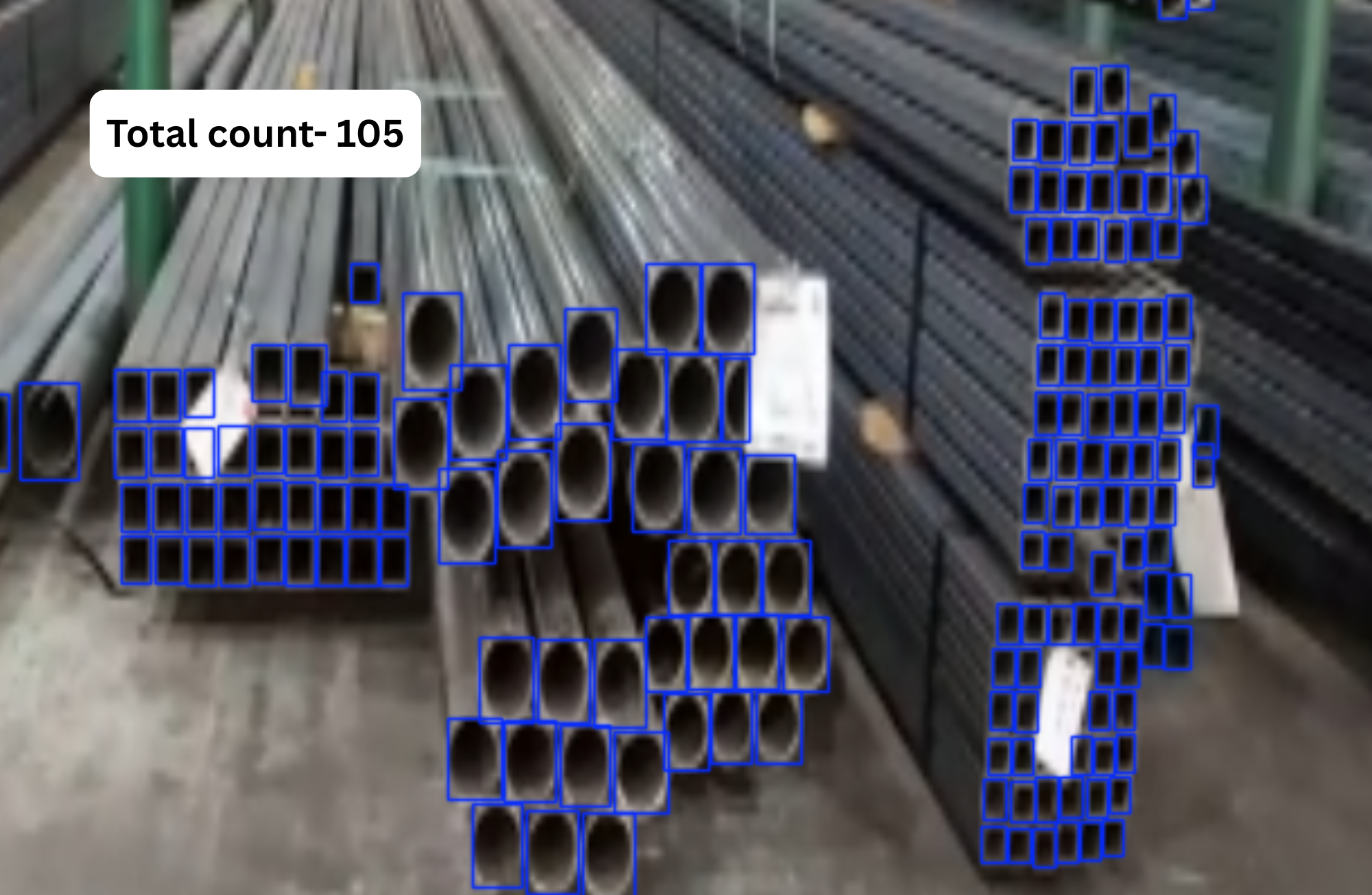Counting Different Shapes of Aluminium Profiles in Manufacturing Using Machine Vision AOI
Published on: Apr 11, 2025

Written by: Content team, Intelgic
Counting Different Shapes of Aluminium Profiles in Manufacturing Using Machine Vision AOI
In the dynamic world of aluminium extrusion and fabrication, aluminium profiles come in a multitude of shapes and sizes — from simple tubes and rods to intricate cross-sections used in automotive, construction, aerospace, and electronics. A critical quality control and logistics task in such manufacturing environments is accurately counting different shapes of aluminium profiles during production. Traditional manual methods are slow, error-prone, and labor-intensive, especially when profiles vary in geometry, orientation, and color.
Enter Machine Vision Automated Optical Inspection (AOI) — a technological leap that transforms how manufacturers approach counting and classification of aluminium profiles. By using high-resolution Area Scan cameras, advanced lighting setups, and AI-driven software, machine vision systems bring accuracy, efficiency, and scalability to a once cumbersome task.
This article explores the challenges involved in counting different shapes of aluminium profiles, how machine vision AOI overcomes these obstacles, the typical workflow of such a system, and what the future holds with emerging AI trends. We’ll also highlight Intelgic’s growing expertise in deploying such intelligent inspection solutions.

Challenges in Counting Aluminium Profiles
Counting aluminium profiles isn't as simple as tallying identical objects. The complexity arises due to several key factors:
1. Shape Variability
Profiles come in various cross-sectional shapes — T, L, U, H, Z, I-beam, hollow square, or custom-engineered designs. Each shape reflects light differently and casts unique shadows, making it difficult to distinguish one from another through basic vision techniques.
2. Profile Overlap
In high-speed environments, aluminium profiles may overlap, be randomly oriented, or stack in unpredictable ways. This makes it hard to detect boundaries and determine if you’re looking at one profile or multiple profiles merged visually.
3. Lighting Conditions
Aluminium has reflective surfaces. Uneven lighting or glare can obscure profile edges and details, making conventional vision systems ineffective.
4. Speed of Production
Modern extrusion lines operate at high speeds, requiring real-time counting without interrupting workflow. Human inspection or basic sensors cannot keep up without introducing bottlenecks.
5. Profile Damage or Deformation
Slight bends or surface damage may cause misclassification or undercounting if the system cannot handle shape distortions intelligently.
How Machine Vision AOI Overcomes These Challenges
Modern manufacturing environments demand precision, speed, and consistency — all of which are difficult to achieve with manual inspection or conventional sensors, especially when dealing with diverse and complex aluminium profile shapes. Machine Vision AOI rises to the occasion by integrating advanced imaging technology, intelligent lighting techniques, and AI-driven software. This powerful trio works in harmony to resolve the core challenges of profile counting and classification.
1. Area Scan Cameras: Delivering High-Resolution Visual Accuracy
To accurately detect and distinguish between different aluminium profile shapes, the system relies on Area Scan cameras — high-performance imaging devices capable of capturing the entire inspection zone in a single frame. Unlike Line Scan cameras that require continuous movement and stitch images line by line, Area Scan cameras offer snapshot-style imaging that is ideal for discrete, batch-based, or randomly placed profiles.
These cameras provide:
- Pixel-perfect clarity for capturing fine details and edge structures of varying profile geometries.
- Full-field visibility, allowing the system to analyze large areas such as conveyor belts or stacking zones.
- Stable frame rates and fast image acquisition, essential for high-speed production lines.
- Compatibility with custom lenses for adjusting the field of view based on part size, ensuring optimal coverage.
With this level of imaging precision, profiles are captured in any orientation — whether stacked, overlapping, or tilted — without compromising image quality or detection reliability.
2. Advanced Lighting Techniques: Engineered for Reflective Surfaces
Aluminium, with its highly reflective and often polished surfaces, presents unique challenges for visual inspection. Glare, hotspots, and inconsistent shadowing can obscure edges and mislead image interpretation if lighting isn't properly controlled.
To counteract these effects, machine vision engineers deploy customized lighting setups that create consistent, shadow-free illumination. Key techniques include:
- Diffuse Dome Lighting: Offers soft, even illumination from multiple angles, significantly reducing harsh reflections and ensuring uniform brightness across the profile surface.
- Backlighting: Illuminates profiles from behind to create sharp silhouette outlines, making it easier to detect precise contours and object separation.
- Polarized Lighting with Filters: Minimizes reflective glare and enhances contrast by filtering out specific light wavelengths, improving visibility of fine surface features on shiny aluminium.
These lighting arrangements are fine-tuned to the unique geometry and positioning of the profiles, ensuring the AI receives clean, high-contrast images for processing — even under changing ambient light conditions.
3. AI-Driven Software: Intelligent Recognition, Classification, and Decision-Making
While imaging hardware captures the raw visual data, the true intelligence of Machine Vision AOI lies in its AI-driven software, which interprets, analyzes, and makes real-time decisions based on the captured images.
Using deep learning models, especially convolutional neural networks (CNNs), the software is trained on vast datasets of aluminium profiles to recognize and classify different shapes — no matter how they are arranged, rotated, or overlapped. Key capabilities include:
- Object Detection & Classification: The system can identify and label each profile based on its cross-sectional shape, regardless of position or orientation.
- Instance Segmentation: AI algorithms distinguish and separate individual profiles, even when they partially overlap or lie in close proximity — ensuring accurate count per batch.
- Anomaly Detection: The system automatically flags bent, deformed, or defective profiles by learning the difference between acceptable and irregular shapes.
- Pose Estimation: AI can determine the exact angle or orientation of a profile, enhancing shape verification and enabling downstream robotic actions like sorting or alignment.
Workflow of Aluminium Profile Counting with Machine Vision AOI
Machine Vision AOI systems follow a fast and intelligent workflow to count and classify aluminium profiles in real time:
1. Image Acquisition
As profiles move on a conveyor or accumulate in bins, Area Scan cameras capture high-resolution images. Triggers from encoders or sensors ensure precise timing.
2. Lighting Synchronization
Custom lighting setups (diffuse dome, backlight, polarized) are synchronized with camera capture to eliminate glare, shadows, and motion blur.
3. Image Preprocessing
Captured images are enhanced through:
- Noise reduction
- Edge sharpening
- Histogram equalization This ensures clarity and consistent contrast before analysis.
4. AI-Based Detection & Counting
AI models perform:
- Detection: Locates each profile
- Classification: Identifies shape
- Segmentation: Separates overlapping objects
- Counting & Pose Estimation: Tallies and orients each item
All in milliseconds with GPU acceleration.
5. Output & Feedback
Results are shown on HMI screens or sent to MES/ERP systems. The system can trigger alerts, stop conveyors, or activate sorting if defects or mismatches are found.
6. Data Logging
All images, counts, and metadata are logged for traceability, compliance, and reporting.

Applications of Aluminium Profile Counting with Machine Vision AOI Across Industries
Machine Vision AOI systems for aluminium profile inspection and counting are widely used across industries where precision, efficiency, and quality control are essential. Key industry applications include:
1. Building & Construction: Counting and verifying architectural aluminium sections (window frames, curtain walls, door profiles).
2. Automotive & Transportation: Inspection of aluminium extrusions used in vehicle chassis, body panels, and frames.
3. Aerospace & Defense :High-precision counting and defect detection in structural and interior aircraft components.
4. Industrial Machinery & Equipment : Sorting and verifying machine frame profiles, enclosures, and guide rails used in industrial systems.
5. Electronics & Solar : Inspection of aluminium heat sinks, frames, and support profiles for electronics and solar panels.

Intelgic’s Expertise in Machine Vision-Based Counting and Inspection
Intelgic has been at the forefront of intelligent manufacturing solutions, especially in machine vision. Our proprietary Live Vision platform integrates state-of-the-art hardware and AI software to deliver real-time insights, counting, and quality control across manufacturing domains.
In the aluminium industry, Intelgic’s solutions are tailored to:
- Handle complex profile geometries.
- Deliver sub-second counting accuracy.
- Adapt to diverse lighting and orientation scenarios.
- Seamlessly integrate with PLC, MES, and SCADA systems.
Whether it’s a standard profile or a custom shape, Intelgic’s system ensures reliable classification, minimal false positives, and highly accurate counting — even in the presence of noise, motion blur, or partial occlusion.
Counting different shapes of aluminium profiles during manufacturing is a deceptively complex challenge. Manual or basic sensor methods are no match for the demands of high-speed, high-precision environments.
Machine Vision AOI, enhanced with Area Scan imaging, custom lighting, and AI-powered software, provides a reliable and scalable solution. It not only counts but classifies, monitors quality, and provides actionable insights — all in real time.
With future advancements in 3D imaging, edge AI, and self-learning systems, the scope of AOI in aluminium manufacturing will only expand. Companies like Intelgic are leading this transformation, delivering intelligent automation tools that empower manufacturers to achieve unmatched accuracy, speed, and productivity.

